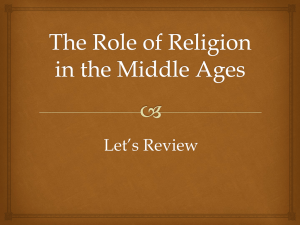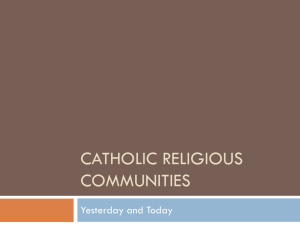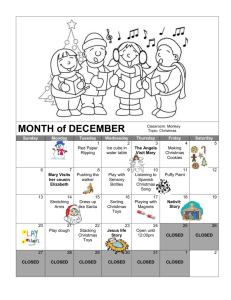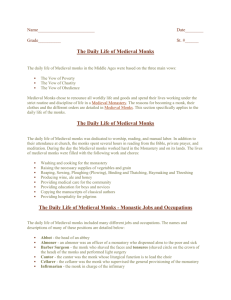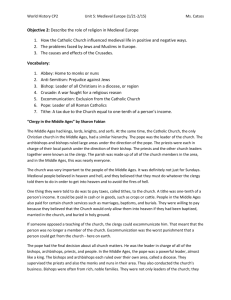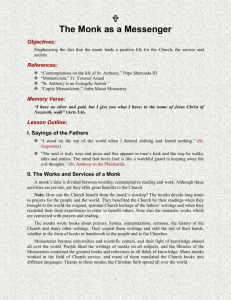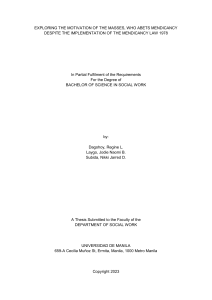File - MrPadilla.net
advertisement
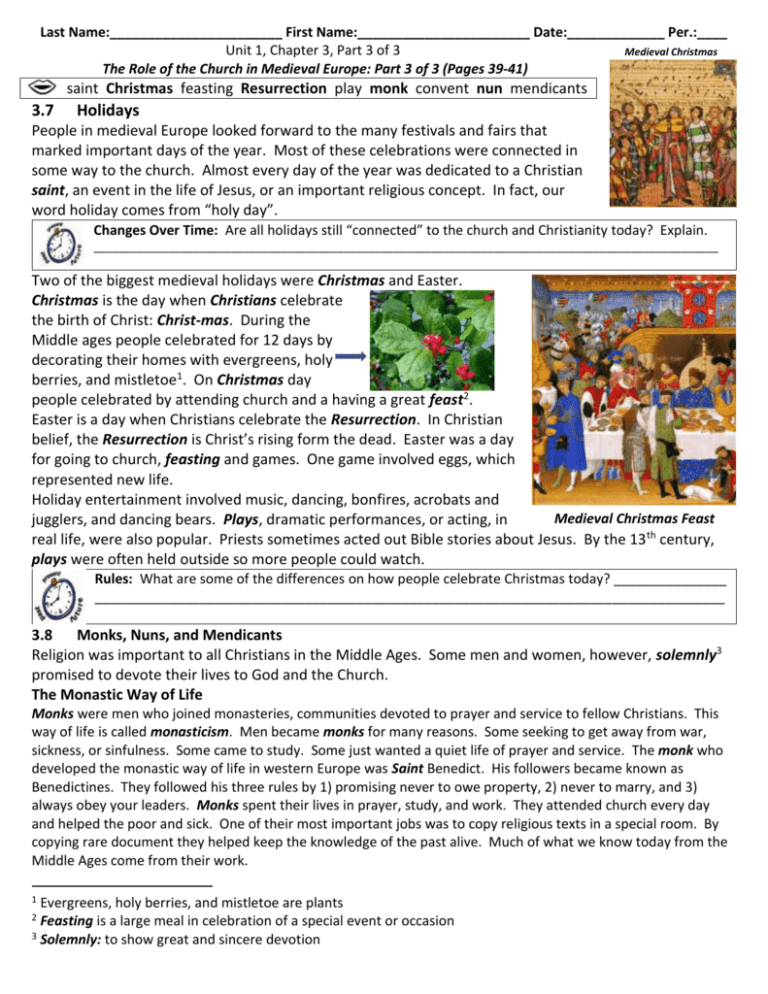
Last Name:_______________________ First Name:_______________________ Date:_____________ Per.:____ Unit 1, Chapter 3, Part 3 of 3 Medieval Christmas The Role of the Church in Medieval Europe: Part 3 of 3 (Pages 39-41) saint Christmas feasting Resurrection play monk convent nun mendicants 3.7 Holidays People in medieval Europe looked forward to the many festivals and fairs that marked important days of the year. Most of these celebrations were connected in some way to the church. Almost every day of the year was dedicated to a Christian saint, an event in the life of Jesus, or an important religious concept. In fact, our word holiday comes from “holy day”. Changes Over Time: Are all holidays still “connected” to the church and Christianity today? Explain. ____________________________________________________________________________________________________ Two of the biggest medieval holidays were Christmas and Easter. Christmas is the day when Christians celebrate the birth of Christ: Christ-mas. During the Middle ages people celebrated for 12 days by decorating their homes with evergreens, holy berries, and mistletoe1. On Christmas day people celebrated by attending church and a having a great feast2. Easter is a day when Christians celebrate the Resurrection. In Christian belief, the Resurrection is Christ’s rising form the dead. Easter was a day for going to church, feasting and games. One game involved eggs, which represented new life. Holiday entertainment involved music, dancing, bonfires, acrobats and Medieval Christmas Feast jugglers, and dancing bears. Plays, dramatic performances, or acting, in real life, were also popular. Priests sometimes acted out Bible stories about Jesus. By the 13 th century, plays were often held outside so more people could watch. Rules: What are some of the differences on how people celebrate Christmas today? _______________ ____________________________________________________________________________________ 3.8 Monks, Nuns, and Mendicants Religion was important to all Christians in the Middle Ages. Some men and women, however, solemnly3 promised to devote their lives to God and the Church. The Monastic Way of Life Monks were men who joined monasteries, communities devoted to prayer and service to fellow Christians. This way of life is called monasticism. Men became monks for many reasons. Some seeking to get away from war, sickness, or sinfulness. Some came to study. Some just wanted a quiet life of prayer and service. The monk who developed the monastic way of life in western Europe was Saint Benedict. His followers became known as Benedictines. They followed his three rules by 1) promising never to owe property, 2) never to marry, and 3) always obey your leaders. Monks spent their lives in prayer, study, and work. They attended church every day and helped the poor and sick. One of their most important jobs was to copy religious texts in a special room. By copying rare document they helped keep the knowledge of the past alive. Much of what we know today from the Middle Ages come from their work. 1 Evergreens, holy berries, and mistletoe are plants Feasting is a large meal in celebration of a special event or occasion 3 Solemnly: to show great and sincere devotion 2 Based on the text on the other side, would you like to become a monk? Why or why not? I (would/ would not) like to become a monk because _____________________________________________________________ Women Monastic life was also open to women who did not wish to marry. Women who became nuns lived in convents (also called nunneries). These communities were also run in the same way as monasteries. Nuns did the same types of work that monks did. Many nuns became important reformers and thinkers. Some women wrote many letters to popes and other church officials explaining to them how things can be better and criticized some of the actions of the church. Both monks and nuns joined religious groups that had their own distinctive rules and forms of service. The Benedictines were one such group. Mendicants Some people wanted to live a religious life without the seclusion of the monastic orders. A famous example is Francis of Assisi. Francis was born to Medieval Nuns wealthy Italian family, but he gave up his money to serve the poor. He founded the Franciscans. Instead of living in monasteries, Franciscan friars traveled among ordinary people to preach and care for the poor and sick. They lived in complete poverty, or being extremely poor, and had to work and beg for food themselves and the poor. For this reason, they were also called mendicants, a word that means “beggar.” Francis loved nature, believed that all living things should be treated with respect. To many people, his example of faith, charity, and love of God represents an ideal form of Christian living. Details: Make a list of as many details from the paragraph above; “mendicants”. ___________________ In your own words, write the definitions of the words below: saint:__________________________________________________________________________________ Christmas:______________________________________________________________________________ feasting:_______________________________________________________________________________ Resurrection:___________________________________________________________________________ play:__________________________________________________________________________________ monk:_________________________________________________________________________________ convent:_______________________________________________________________________________ nun:___________________________________________________________________________________ mendicants:____________________________________________________________________________ ______________________________________________________________________________________ Draw 1 Words Alive below from today’s vocabulary words


